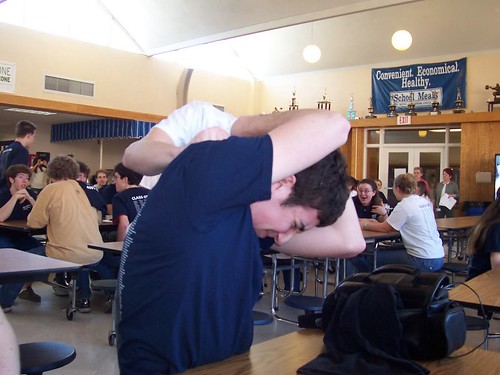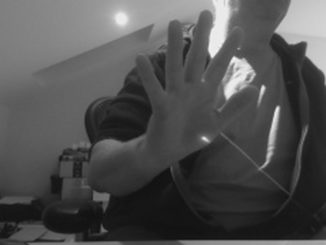
Are you soft, lad? FIIIIGHT!
This is a great English tradition, we get raucous and fight. It is part of our heritage, and I will not have it any other way.
Not the ritualised fighting amongst our “Irish” travellers, no. Proper fisticuffs. When the nobility chose to fight fatally with swords and pistols, the ordinary everyday working man chose to settle it with fists. Non fatal, and with a clear winner.
There are no prizes for all. You win or you lose, it is binary.
There are many schools of fighting, some from the West and many from the East. From the East, Kung Fu is one of the most popular and recognised.
The Shaolin style is often referenced in popular media. Allegedly founded because a Shaolin abbot was annoyed that while spiritually his acolytes were doing very well, they fell prey to bandits along the way to the mountain temple. So, a physical aspect was introduced to counter this. And hence – Shaolin monks being hard bastards.
In Japan it was different; the governing classes made owning weapons illegal. So, Kara-Te was born. And in China, the reason you eat with chopsticks is that owning a knife was outlawed unless you had good reason.
Literally meaning “empty hand” I am sure you can extrapolate to “Kara-Oke” – Oke meaning voice.
One thing that both karate and kung fu share is loyalty to the school. For monks it was a necessary part of their education; for others it is part of the need to label “the other brand” which is not as good as ours. This is why you see a lot of Hong Kong films with some sort of rivalry between different schools of training. Their school is the One True Way.
Ritualised fighting like this is all well and good, but in reality it is as much of a nonsense.
If you’re going to fight, then you must fight to win. Endless drilling by various schools of thought on fighting provide you with a precise defence against other, similar schools of fighting. Monkey style Kung Fu depends on an agility while fighting, multiple small hits being the path to victory; Shotokan (tiger) style Karate relies on a single killing blow. It is alleged that this was borne from the need to break the wooden armour of the riders who came to the village looking for sport.
There is a certain amount of animism in various Eastern fighting schools, the Monkey style, the Tiger style and so on. Each teach certain combinations, and the counter to this; those rapid exchanges of blows in the films you see. If you can, look for “Snake and Crane” in the Jackie Chan backlog. There is some excellent fighting there, but it is all memorised in the brain and in the muscles. Repetition, repetition and repetition.
These ritualised fight sequences in Karate are known as kata, or in Kung Fu, Forms. You imagine an opponent, attacking, and defend and attack proportionally. Most schools of fighting have a certain level of competence required to get to the next belt, or sash. As you progress through the ranks, the task become harder. For example, you may begin a white belt (starter belt) grading ceremony, and be asked to perform some low blocking technique, and some punches. By the time you’ll hit Black belt, you’ll be asked to kick in every direction, punch low, high, defend and attack at the same time. And bleed; the examiners are not fussy if you bleed or your opponent does, but there must be blood in the final Kumite (fighting) stages of the grading ceremony.
So that is a potted history of Eastern fighting; the ruling class robbed the peasantry of their weapons so the peasantry devised ways around it.
In Europe, we devised differing measures to fight. We had not had the removal of farming implements from the peasantry, and Buffets was the start of it.
Buffets was basically two blokes standing apart and hitting each other in the face until one went down. This rough pastime eventually went through a rule making process – “Queensberry rules” where a knocked down opponent could not be hurt any further. This really is the basis of the English notion of fair play; “when a man is down, don’t kick him”.
It was an honourable pastime, much loved by the aristocracy at the time that was keen to see an end to fatal duels with foils and pistols. And bare knuckle, when transported into the West End for some further sport watching and betting on the outcome of such confrontations of brutes.
But all the above is to belie the true nature of fighting. You fight and you win or you lose; all sense and sensibility has long since parted and it is the reptile part of your brain in charge. In recent times the cost of losing has increased. Queensberry rules no longer apply; a downed opponent is to be stamped and kicked.
When on the street, your finely honed wu-shu means nothing. A perfect kata is you fighting with yourself. At the end of the day, you run or you fight.
Muggers will either attempt to distract or scare you. Time is of the essence, as always. Fright them with immediate escalation to violence, or lose.
At the end of the day, you run or you fight.
If you do find yourself in a street confrontation, run. Run, run and after that, run away.
All of this fighting talk so far is just sport. None of it will help if you are attacked in the street.
If you can’t run away or talk your way out of it, then it’s all about feet. Every single fighting art teaches this. Power is rooted in the feet, directed by the hips and channelled by the arms. Most street attackers will windmill at you with hands and arms, feet akimbo. Your feet control your centre of gravity, and fighting is all about your centre of gravity.
Step back and look at their feet. How are they placed, and for what purpose? If they step back and fumble in their pocket, chances are they’re going for a weapon.
Which is when you need to be most vicious, attack their knees, shins and avoid the obvious high profile target of chins because their windmilling “training” of casual violence will ensure they are immune or protected by raised hands. They will be looking at your face, not your feet. Shout, scream or indeed use the karate “spirit shout” ki-ai to focus your chi. Or something. You have to go from placid to raging. And when they are down – run.
When wearing normal clothes, you are not going to be able to pull off that lovely spinning back kick you’ve laboured over. Fists, ribs, shins, solar plexus. Go for soft targets on the body that will wind and incapacitate. Bollocks, throat. You cannot afford to do otherwise.
If you are going to fight, fight not as one that beateth the air. Fight and win, go for shins and knees. Do not allow yourself to be grabbed; move backwards, twist. You cannot fight half hearted, go full on – placid to raging or just do not fight.
In the 20 or so years I have lived in our thoroughly enriched city of London, I’ve been attacked 3 times and still made it home, twice via A&E to have my face stitched up. Fighting is not big, clever or cool but if you are going to fight, do so to win. But understand the cost that comes with it, you must go to the rage or to the floor.
© El Cnutador 2018
The Goodnight Vienna Audio file



